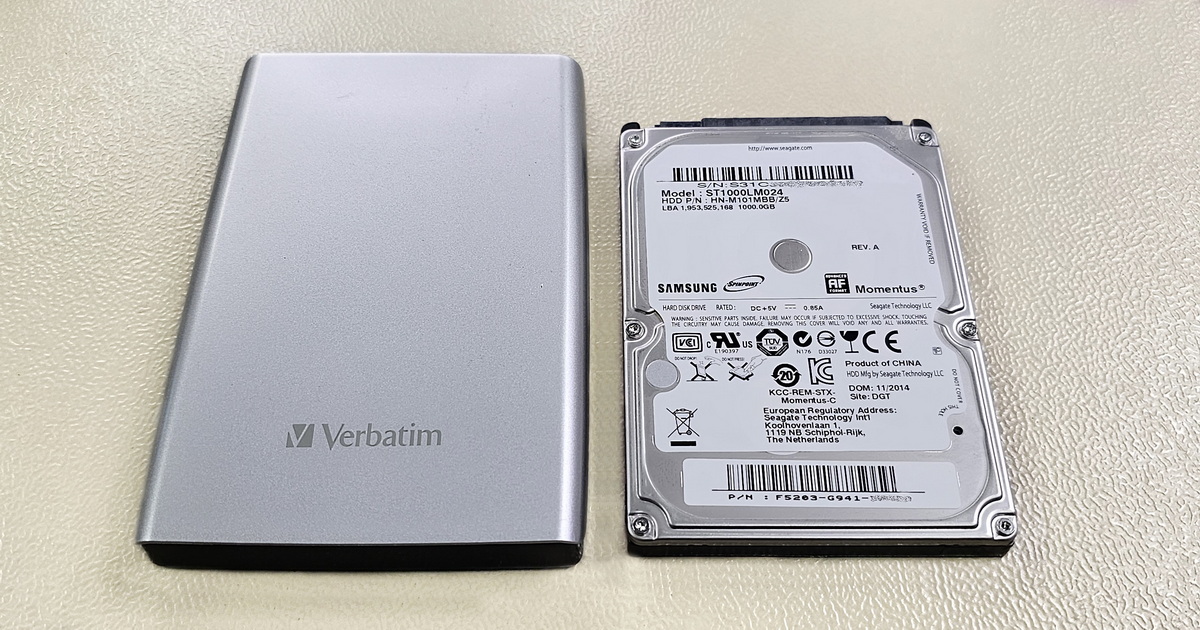4TB on hard drive platters measuring 11 x 8 x 2 cm is quite a lot. Users often don't even make full use of the disk's capacity and store not just important data but also expendable data such as movies and music. The feeling of diligent backup to an external drive evaporates the moment the disk falls or fails spontaneously, making the data on the disk inaccessible. For some reason, the user had put immense trust in this single storage device, considering the transfer of data to it as "backup." This is a common scenario we encounter daily.
Older hard drives are simpler in construction and are therefore more predictable when it comes to data recovery. Although the average hard drive from ten years ago might not seem much worse or better than its current counterparts, many data recovery options for modern hard drives are often limited by SMR (Shingled Magnetic Recording) technology, locked technological modes, SED (Self Encrypted Drive) features—where the location of its key can't be determined unless we have a functional T2 (2nd level translator)—and other peculiarities (explanations of these can be found at the end of the article). Acelab technologies are thus indispensable for any professional in the data recovery field.
Data Recovery from an External Hard Drive
The "patient" in this case was an external hard drive from Western Digital. Hidden in a plastic box was a disk with the model number WD40NDZW, whose main issue was the fall it had suffered. The fall resulted in severe damage to the read heads, fortunately without causing serious harm to the data platters. This was also thanks to the foresight of the user. Often, the reason for damage to the data platters is not the fall or impact itself but the subsequent attempts by the user to boot the drive. This user wisely weighed the risks of such experiments and turned to us for help. This gave his binary memories a second chance.
The first step in case of mechanical damage to a hard drive is always a visual inspection of the state of the read heads and data platters. As can be seen from the photographs, there was no doubt here about the severity of the damage. It was therefore necessary to secure corresponding compatible read heads and other components. After removing the read heads from the drive, a further thorough check of the state of the data platters follows. If they are fine, one can proceed with the disk assembly. All these steps require precision and a controlled working environment. They must be carried out by a trained technician with extensive experience. Even a small mistake can be fatal.
A Master Surgeon Cannot Do Without Precise Tools
Fixing mechanical damage to a disk doesn't solve the problem entirely. Next comes an equally challenging task that requires not just skilled hands but also advanced technology. Assistance from devices like PC-3000 Express or PC-3000 Portable III from Acelab is essential for accessing the disk's service data and preparing it for further actions. After making the necessary modifications and checks, the actual data recovery can commence. The process can be complicated, depending on the extent of the damage, and it's essential to keep the disk's condition under control throughout. Here, humans and technology work hand in hand.
The data recovery case for a 4TB external Western Digital drive was successful. However, in some situations, disk defects may be irreparable or technologically unresolvable. Therefore, always pay attention to meticulous backup!
Demystifying Technical Terms
This article mentioned several technical terms that deserve further explanation:
SMR - Shingled Magnetic Recording, is a data writing technology for hard drives that allows for greater data storage but can complicate the data recovery process. Simplified, SMR divides the data storage space into groups, each containing several tracks that overlap one another. While you can read from each track, you can only write to the top track. If data changes in an overlapped track, the disk must first alter the content of all overlapping tracks.
SED - Self Encrypted Drive, is a feature that ensures hardware-level encryption of data on the drive. For decryption, a key stored on the data platters is required. In modern drives, the key is also generated by a processor that's part of the disk's electronics. Since data is encrypted from the drive's first use, user password protection simply locks the SED key without needing to encrypt all data on the drive. A similar function is also employed by current SSDs and mobile phones.
T2 - 2nd level translator, is an essential part of the shingled writing function (SMR), determining the placement of data on the disk and often complicating serious problems with modern Western Digital drives. In the newest WD drives, T2 damage also results in losing the information about the SED key, making a T2 issue quite serious for user data.
ROM with Locked Technology Mode - a small chip on the disk's electronics stores essential modules without which the hard drive cannot operate. For modern Western Digital hard drives, this information is locked, and to work with the drive at a service level, backup service data, etc., it is first necessary to unlock the data in ROM.


































